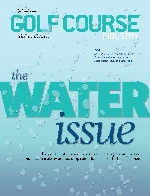 Pat Jones Pat Jones |
GCI’s intergalactic headquarters sits a half-mile or so from the banks of Lake Erie. On quiet mornings, I’ll occasionally hear the low-pitched horn of tugboats as they haul humongous container ships out into deep waters. The sound reminds me that I live and work right next to one of America’s Great Lakes. The big lake is pretty clean now thanks to decades of improvement in waste disposal driven by the Clean Water Act which, ironically, was spurred by the fact that the Cuyahoga River was so damned dirty it caught fire 43 years ago. Now, you can eat all the perch and walleye you want and the beaches are crowded with swimmers who do not seem to be growing extra appendages or keeling over after frolicking in the lake’s gentle waves. Occasionally we hear concerns about the big dead zones in the middle of the lake where nothing grows. For a while, activists pointed fingers at agricultural and lawncare chemicals (just because we’re an easy target) but most scientists now believe it’s a natural phenomenon. The bigger threat to the lake is invasive species like the snakehead carp and the now ubiquitous zebra mussel…a couple of Asian imports we could have done without. The lake dominates our weather. God forbid you live on the eastside of town when the big snow machine kicks into high gear. Buffalo ain’t got nothing on us when the north wind blows across Erie and deposits a foot of snow on your doorstep. For Clevelanders, the lake represents many things. For some, it’s a symbolic connection to the past when Erie was a superhighway for goods and raw materials processed here before the city starting rusting away. For others, it’s a playground for boating, fishing and shore-side living. And, for the smart few who think harder, it’s by far the biggest and most valuable asset the city has, for that blue water is really gold for the future. Erie is a relatively puny member of the Great Lakes family. It’s dwarfed by the bigger and deeper Michigan, Huron and Superior. But, even though it’s the runt of the litter, the lake that sits in my proverbial front yard represents about 2.5 percent of the usable fresh water in the world. The Great Lakes as a whole are 21 percent of every drop the planet has to drink. How we manage fresh water – who can use it, who controls it and how it is allocated – is the single largest resource question facing humanity. Overpopulation, desertification, deforestation and a bunch of other “ations” are soaking up water faster than Mother Nature’s slow, steady cycle can replenish it. It’s a quiet crisis that I suspect will be far noisier in the lives of our grandchildren and their grandchildren. In the scary George Jetson version of the future, we’ll all be gadding about with jetpacks but we’ll be thirsty as hell. Golf is a pimple on the ass of the overall water crisis we face as a species. In the very long term – say 200 years from now – it’s hard to imagine that a wise civilization would allocate one drop of a life-sustaining, precious resource to a goofy recreational activity involving sticks, balls and plaid pants. Perhaps we’ll have conquered desalinization and I will have been dead wrong. Mostly I’ll be dead so I’m not concerned about being wrong. I’ve written before that your golf course’s water “rights” will gradually and regionally be challenged by rationing, statutory reductions in acreage, dramatically higher pricing and forced conversion to non-potable sources. It probably won’t happen in one sweeping new law or some other catastrophic blow, but it will come in the form of “death by a thousand tiny cuts.” Am I being melodramatic? You decide, but I’ll ask you once again: Do you seriously believe our industry’s use of fresh water will go unchallenged for much longer? Many of you are ahead of the curve based on today’s dictates about turf irrigation. You’re being proactive because you hate wasting resources, you’re trying to save money or you simply dialed it back to see what you could get away with. Whatever the reason, kudos to those of you who are already in conservation mode. But, although we use water more wisely, we still use a lot. And our water use is perceived by many non-golfers to be frivolous. You can shout all you want about how golf contributes economically, environmentally and recreationally, but politically it won’t matter a whit unless we can also show we’re pioneering efforts to save water. That’s why I’m looking forward to seeing what emerges from the USGA’s Water Summit this fall. At the very least, I’m heartened that our most respected industry group is taking the issue seriously. The question is whether we as an industry can come to grips with the inevitable: golf must evolve or the game will simply dry up and blow away like dust in the wind. |

Explore the July 2012 Issue
Check out more from this issue and find your next story to read.
Latest from Golf Course Industry
- Editor’s notebook: Green Start Academy 2024
- USGA focuses on inclusion, sustainability in 2024
- Greens with Envy 65: Carolina on our mind
- Five Iron Golf expands into Minnesota
- Global sports group 54 invests in Turfgrass
- Hawaii's Mauna Kea Golf Course announces reopening
- Georgia GCSA honors superintendent of the year
- Reel Turf Techs: Alex Tessman





